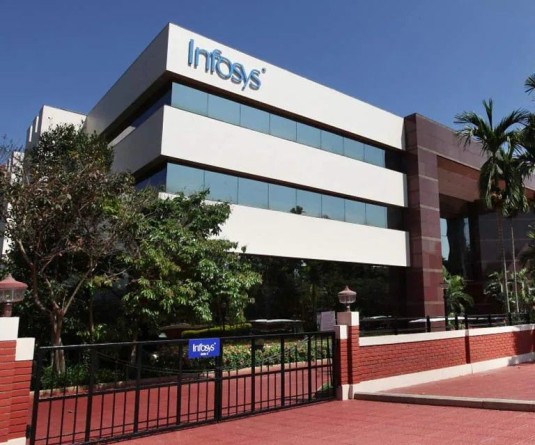IANS Photo

New Delhi, September 6 (IANS) Joining other automakers in reducing prices, Mahindra & Mahindra Ltd (M&M) on Saturday announced to fully pass on the GST 2.0 benefits to customers across its ICE SUV portfolio -- up to Rs 1.56 lakh -- with an immediate effect.
According to the company, models like Thar, Scorpio, Bolero, XUV700, and Scorpio-N will be available with substantial savings ranging from Rs 1.01 lakh to Rs 1.56 lakh.
Bolero and Bolero Neo are cheaper by up to Rs 1.27 lakh, while the XUV3XO Petrol gets a cut of Rs 1.40 lakh, and the XUV3XO Diesel leads with a reduction of Rs 1.56 lakh.
The Scorpio-N offers savings of up to Rs 1.45 lakh, the Thar Roxx Rs 1.33 lakh, and the flagship XUV700 RS 1.43 lakh.
Toyota Kirloskar Motor (TKM) also announced it will fully pass on the benefits of the recent GST rate reduction to its customers across its range of vehicles -- ranging from Rs 48,700 (Rumion) up to Rs 3.49 lakh (Fortuner).
“We sincerely thank the government of India, for this historic reform. It has not only enhanced affordability for customers but also strengthened overall confidence in the auto sector. Ahead of the festive season we expect this step will provide strong momentum and further accelerate demand,” said Varinder Wadhwa, Vice President, Sales-Service-Used Car Business and Profit Enhancement.
While Toyota Glanza will see price cuts up to Rs 85,300, Taisor will see price reduction up to Rs 1,11,100; Hyryder up to Rs 65,400; and Fortuner up to Rs 3,49,000.
Renault India also announced a significant price reduction for its cars on Saturday. Prices of its three models — Kwid, Triber and Kiger — have been slashed by up to Rs 96,395.
Under the new GST 2.0 framework, all internal combustion engine (ICE) cars are now taxed at either 18 per cent or 40 per cent.
Smaller cars such as hatchbacks, compact sedans, and compact SUVs fall under the 18 per cent slab, while mid-size, larger, and luxury models attract 40 per cent. Previously, ICE vehicles were subject to 28 per cent GST plus an additional compensation cess ranging between 1 per cent and 22 per cent depending on size and engine capacity.
For electric vehicles, the GST rate remains unchanged at 5 per cent, while hydrogen fuel cell vehicles (FCEVs) have seen a reduction from 12 per cent to 5 per cent.
GST reforms will boost sluggish sales in entry-level cars, improve tax compliance
The Goods and Services Tax (GST) reforms in automobiles and automobile parts will provide a direct impetus to demand in entry-level mobility segments where sales have been sluggish, and make compliance easier, a report has said.
“The uniform 18 per cent rate on auto parts simultaneously addresses compliance complexity and reduces lifecycle maintenance costs, benefitting both consumers and vendors,” a report from Grant Thornton Bharat said.
The government has restructured the GST for India's automobile sector effective from September 22, 2025. Entry-level vehicles and parts will now be taxed at a lower rate of 18 per cent from earlier 28 per cent.
The larger cars and luxury models will face a 40 per cent tax rate up from 28 per cent, but the cess on them has been completely removed, dropping the effective tax incidence lower.
By consolidating small cars (petrol up to 1200 cc, diesel up to 1500 cc, length not exceeding 4 metres), small hybrids, two wheelers up to 350 cc, three-wheelers, and goods vehicles into the 18 per cent bracket, the GST Council has reduced the effective incidence from nearly 29–31 per cent (including cess) to a uniform 18 per cent.
The reduced rate is also applicable to ambulances, goods carriers, buses, and factory-fitted hybrids with smaller engine sizes. Auto parts, chassis, accessories, and tires will shift to 18 per cent from the current 28 per cent rate, simplifying compliance and reducing lifecycle costs.
Seats used for motor vehicles, Spark-ignition also got shifted from 28 per cent to 18 per cent slab. Tractors, trailers and fuel-cell hydrogen vehicles with length not exceeding 4 metres got shifted from 12 per cent GST slab to 5 per cent GST slab.
The new structure ensures that price-sensitive buyers experience tangible relief through upfront cost reductions, while fleet operators and logistics providers can gain through admissible ITC and faster refunds, strengthening liquidity and replacement cycles, the report noted.
These reforms pave the way for a more efficient, affordable, and business-friendly GST system, fostering economic growth, enhancing ease of doing business, the report noted.






